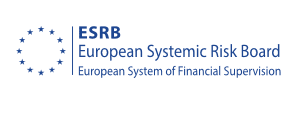The majority of regulators, central banks and industry bodies are softening their stance on the systemic risk ETFs pose to financial stability following the liquidity test in March.
With discounts on fixed income ETFsreaching record levels, critics were quick to highlight the flaws of the wrapper arguing this showed ETFs provide an “illusion of liquidity” by offering easy access to illiquid parts of the market.
However, what transpired was the all-time high discounts were in fact signalling real-time prices compared to the net asset values (NAVs) which were stale and in catch-up mode. To take this a step further, the fact ETFs continue to trade even during periods of vanishing liquidity forces price integrityin the underlying bond market.
Highlighting this, the iShares $ Corp Bond UCITS ETF (LQDE) traded 1,000 times on 12 March while its underlying securities changed hands just 37 times.
As a result of the way fixed income ETFs traded during this period of market stress, bodies such as central banks are becoming increasingly confident about the potential systemic risk the wrapper poses.
The Bank for International Settlements (BIS), for example, arguedthe March volatility showedETFs incorporate information “in a more timely manner” than their underlying holdings especially in illiquid areas of the market such as corporate bonds.
This represents somewhat of a shift froma BIS study in March 2018which said corporate bonds were less suited to being wrapped in ETF format than their equity counterparts.
This, the paper said, was partially due to the design flaw with corporate bond indices as they are weighted in terms of total debt.
“As passive bond funds mechanically replicate the index weights in their portfolios, their growth will generate demand for the debt of the larger, and potentially more leveraged, issuers,” the BIS said. “From a financial stability perspective, there is a concern that this can act pro-cyclically and encourage aggregate leverage.
The potential for ETFs to cause systemic risk was also highlighted by the European Systemic Risk Board (ESRB) in July 2019 which argued there were four areas of particular concern.
These risks included the growing popularity of ETFs, the rise of more complex products such as inverse and leveraged ETFs, investors moving into more illiquid parts of the market through the ETF wrapper and APs not engaging during periods of market stress.
However, the ESRB appeared to shift its stance in a report last month by claiming the large discounts was less of a representation of friction in the arbitrage mechanism but instead reflected a lack of liquidity in the underlying market.
“In times of stress, ETFs can trade at significant discounts in the secondary market, and there may be frictions in the AP mechanism,” the report said. “However, past volatility events in ETF shares have generally been short-lived, as APs and other liquidity providers have stepped in during periods when the price of the underlying assets and the ETF price diverge.”
The Bank of England has also been positive about the way ETFs traded in March pointing to the benefits of the secondary market.
The role of the secondary market in reducing the risk of a fire sale was not highlighted by the Central Bank of Ireland (CBI) in its critical November study.
The Irish regulator argued the close information links between ETFs and equities creates the potential for “illiquidity contagion”, however, failed to take into account the secondary market.
While this was not directly related to the coronavirus volatility, the CBI’s view on ETFs is extremely important to the ecosystem considering its role in the non-transparent ETFs decision this side of the pond.






